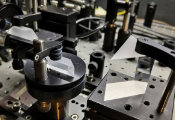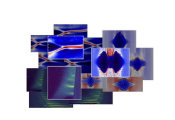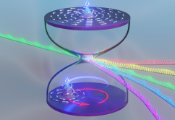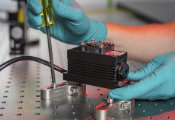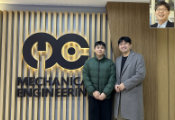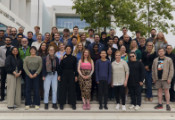Two Italian Photonic Quantum Processors Now in Orbit
July 03, 2025 -- For the first time in history, two quantum photonic chips developed by the Italian National Research Council (CNR) have been launched into space. This milestone was achieved thanks to an international collaboration involving the CNR Institute for Photonics and Nanotechnologies (CNR-IFN), the University of Vienna, the Technische Universität München (TUM), the German Aerospace Center (DLR), and other European partners. The two devices are now in low Earth orbit at an altitude of approximately 520 km, each housed in separate satellites launched on Monday, June 23rd, aboard the same rocket from the Vandenberg Space Force Base in California.
The two experiments explore complementary frontiers of quantum optics in space:
- The first satellite hosts a photonic quantum processor designed to autonomously perform quantum computing tasks, as part of a mission coordinated by the University of Vienna.
- The second satellite carries an integrated photonic processor that will be used for fundamental quantum physics experiments conducted in collaboration with the Technische Universität München.
Both devices were developed in the CNR-IFN laboratories in Milan, within the research group led by Roberto Osellame, a recognized international leader in the field of integrated photonics. The missions were carried out under the scientific coordination of researchers Francesco Ceccarelli and Giacomo Corrielli, who have long been engaged in the development of robust, miniaturized, and energy-efficient photonic circuits capable of operating in the extreme conditions of space.
“Sending a quantum processor into space requires a level of reliability never before achieved by integrated photonic technology,” explain Ceccarelli and Corrielli. “We designed optical chips that combine mechanical robustness with the ability to operate autonomously, successfully passing tests of vibration, shock, thermal fluctuations, and even exposure to highly ionizing radiation like that found in space beyond Earth’s atmosphere.” The modular and compact architecture of these devices made it possible to meet the stringent requirements of weight, energy consumption, and reliability demanded by satellite systems.
In these days, the researchers are setting up the communication with the two satellites, and they will soon begin the experimental measurements, which will explore, on the one hand, the potential of quantum computing in space as an autonomous platform for future missions; onn the other hand, the study of the fundamental principles of quantum mechanics in microgravity conditions, to explore the connection between these two physical theories.
“With these two missions, CNR positions itself as a provider of enabling technologies for employing quantum information in space, contributing to the advancement of fundamental science and the emergence of new application scenarios in the space sector,” comments Roberto Osellame.


